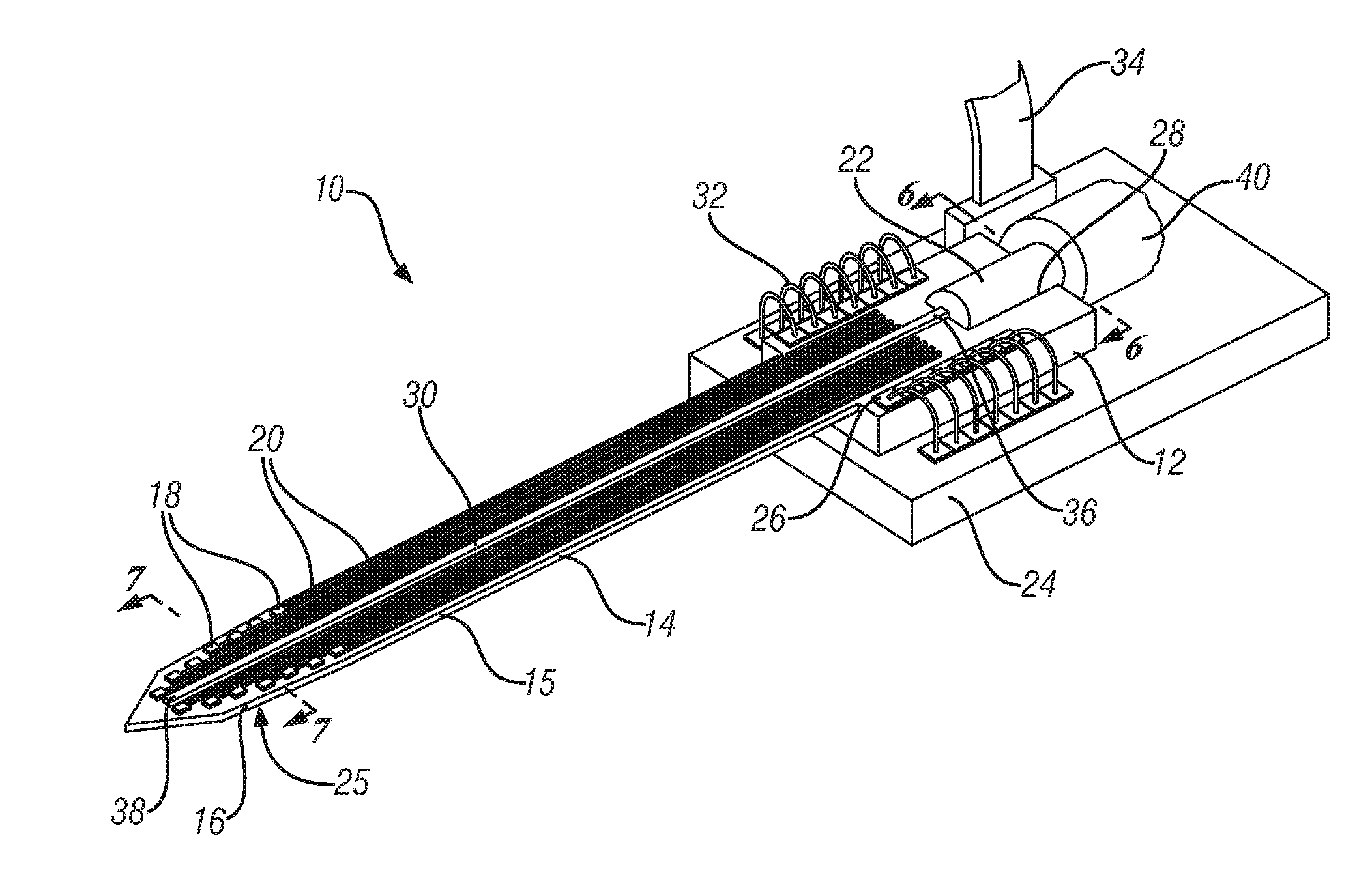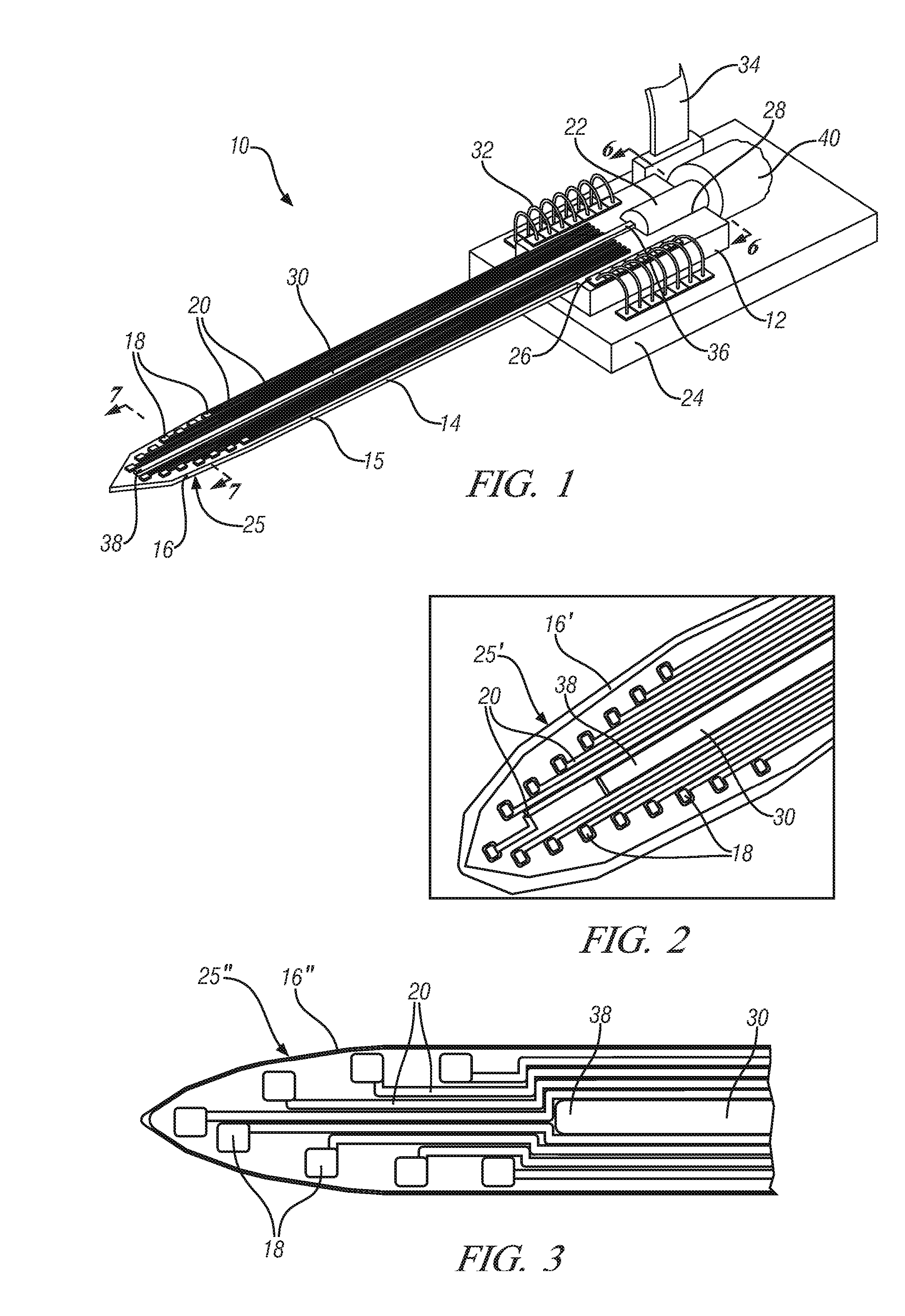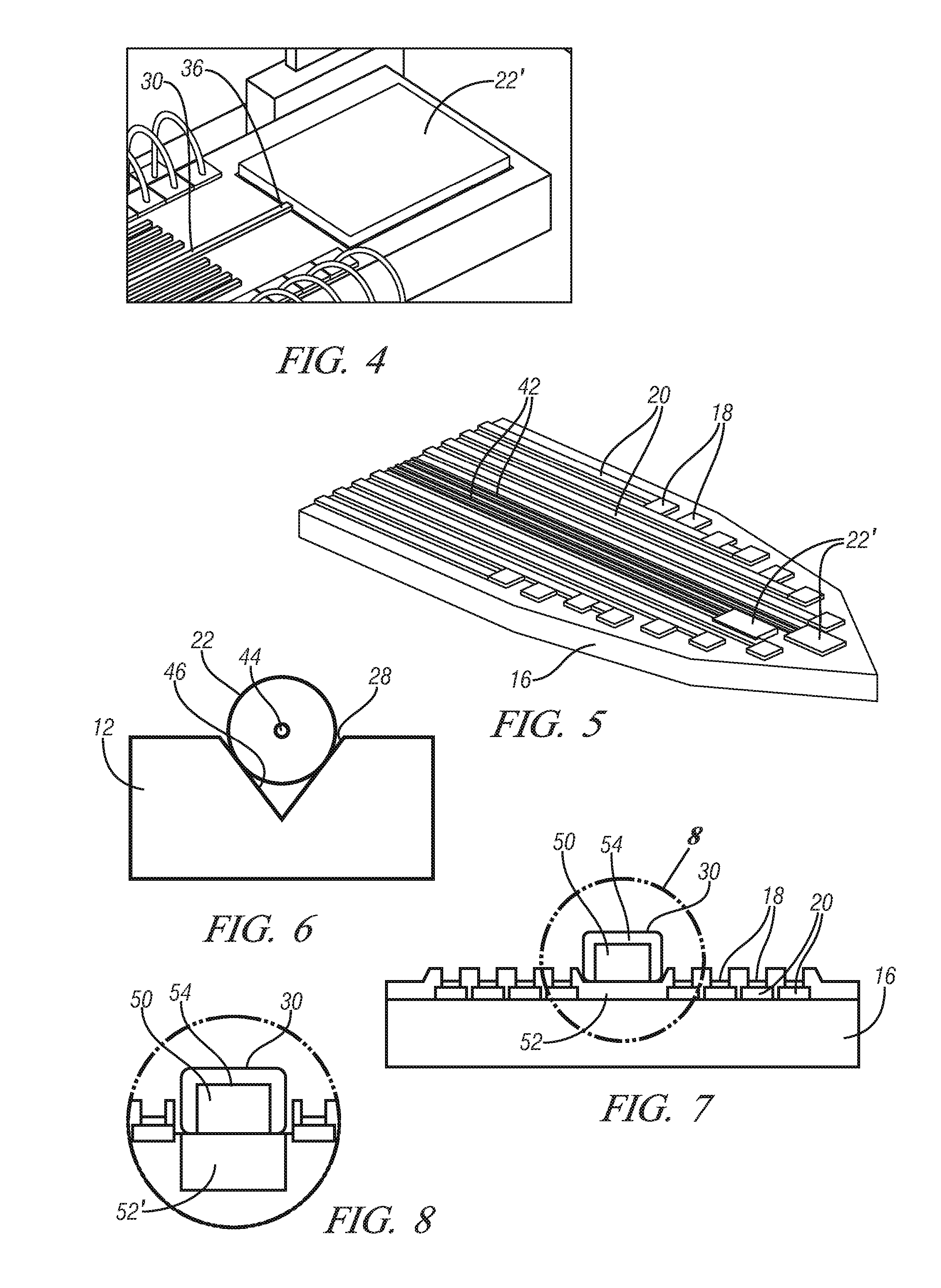Neural probe with optical stimulation capability
a neural probe and optical stimulation technology, applied in the field of neural probes, can solve the problems of bulky probes, damage to neurons, poor spatial resolution of electrical stimulation,
- Summary
- Abstract
- Description
- Claims
- Application Information
AI Technical Summary
Benefits of technology
Problems solved by technology
Method used
Image
Examples
Embodiment Construction
[0022]Described below are exemplary embodiments of an optical neural probe that may have sufficient spatial resolution to accurately target, stimulate, and record the reaction of neurons, or as few as a single neuron, utilizing a slim, compact structure. In general, the disclosed embodiments of the optical neural probe utilize structures that emit neuron-affecting light to selectively target neurons and that include recording electrodes near the region of light emission to receive any electrical responses from the targeted neuron or neurons and transmit the responses to a location to be recorded or processed. The neuron-affecting light can be used to stimulate or silence individual or groups of neurons. Such light can include visible and / or non-visible light. Stimulation or silencing of multiple sites is made possible by certain variations of the disclosed probe, as well as stimulation or silencing by more than one wavelength of light either simultaneously or sequentially. Although ...
PUM
 Login to View More
Login to View More Abstract
Description
Claims
Application Information
 Login to View More
Login to View More - R&D
- Intellectual Property
- Life Sciences
- Materials
- Tech Scout
- Unparalleled Data Quality
- Higher Quality Content
- 60% Fewer Hallucinations
Browse by: Latest US Patents, China's latest patents, Technical Efficacy Thesaurus, Application Domain, Technology Topic, Popular Technical Reports.
© 2025 PatSnap. All rights reserved.Legal|Privacy policy|Modern Slavery Act Transparency Statement|Sitemap|About US| Contact US: help@patsnap.com



